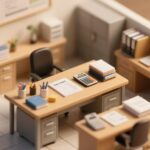Slip accidents are among the most common yet preventable incidents, occurring in workplaces, homes, and public spaces. These accidents can lead to severe injuries, financial losses, and even long-term disabilities. This article explores the causes, consequences, and effective measures to prevent slip accidents, ensuring a safer environment for everyone.Common Causes of Slip Accidents
- Wet or Slippery Surfaces: Spills, recently mopped floors, or rainy conditions can create hazardous walking surfaces.
- Poor Footwear: Worn-out or inappropriate shoes with insufficient traction increase the risk of slipping.
- Uneven Flooring: Cracked tiles, loose rugs, or uneven pavement can cause unexpected slips.
- Lack of Warning Signs: Failure to mark wet or hazardous areas can lead to avoidable accidents.
- Inadequate Lighting: Dimly lit areas make it difficult to spot potential slip hazards.
Consequences of Slip AccidentsSlip accidents can have far-reaching impacts, including:
- Physical Injuries: Fractures, sprains, head injuries, and back problems are common outcomes.
- Financial Burden: Medical bills, lost wages, and legal fees can strain victims and businesses.
- Emotional Trauma: Fear of recurrence or chronic pain may affect mental health.
- Workplace Disruptions: Employee absences and reduced productivity can harm businesses.

Preventive Measures to Reduce Slip AccidentsImplementing proactive strategies can significantly lower the risk of slip accidents:
- Regular Maintenance: Inspect and repair flooring, stairs, and walkways to eliminate hazards.
- Use of Anti-Slip Mats: Place mats in high-risk areas like entrances or kitchens.
- Proper Signage: Clearly mark wet or hazardous zones to alert pedestrians.
- Employee Training: Educate staff on safety protocols and hazard recognition.
- Appropriate Footwear: Encourage slip-resistant shoes in workplaces prone to spills.
Legal and Organizational ResponsibilitiesBusinesses and property owners have a duty to ensure safe environments. Negligence in maintaining premises can result in legal liabilities. Compliance with safety regulations, such as OSHA standards, is critical to avoiding penalties and protecting occupants.ConclusionSlip accidents are preventable with awareness, proper maintenance, and adherence to safety guidelines. By addressing hazards proactively, individuals and organizations can create safer spaces and reduce the incidence of these costly and painful incidents.



